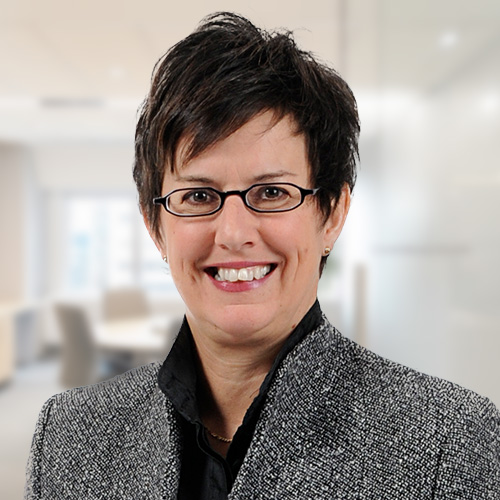Commentaires
Demography & Destiny
20 octobre 2022

“Demography is Destiny.”
– August Comte[1]
From the dawn of mankind to the 1960s, it took approximately 60,000 years for the Earth’s population to hit the 3 billion mark. All it took was just 60 more years to add 4 billion more inhabitants and we remain on track to hit 10 billion by 2060.
Demographics influence everything from politics to sociology to economic growth. In fact, economic or GDP growth is essentially driven by two factors – growth in population and increase in productivity.
While Europe and Japan have lately been associated with aging societies, declining populations and slowing growth, emerging markets continue to be associated with mega cities and limitless demographic dividends acting as investment tailwinds far into the future. However, the stark reality is that most emerging markets have already exhausted their demographic dividends. According to research by Aberdeen, even among emerging markets, only Pakistan and Nigeria are expected to reap dividends far into the future.
In fact, we think there could be a downward bias to population growth estimates for most emerging markets for reasons that are both societal and structural. Let’s take a look at the two emerging market giants – China and India.
China’s rapid rise has been facilitated by a demographic dividend that has not sustained for as long as most analysts predicted. To the contrary, China’s population has begun to decline a full nine years earlier than expected, with the population shrinking for the very first time in 2022. From the beginning of President Xi Jinping’s term in 2012 to 2021, the number of babies born each year fell more than 45%.
Meanwhile, India’s population is expected to surpass China in 2023, a good seven years earlier than expected. With India, one would expect the opposite trajectory with the promise of a rich demographic dividend ready to be encashed for decades to come. But according to the United Nations, India’s population is actually expected to peak a decade earlier than expected (in 2050) and at a lower level (1.6 billion vs 1.7 billion). Given how badly statisticians and demographers have been off the mark with China, it would be reasonable to assume that these numbers could be revised downwards very soon.
The downward revisions stem from our underestimation of some of the structural factors driving this decline in both countries. These factors include:
- The rising cost of raising a child in urban areas. This is by far the biggest factor. The average total cost of raising a child in China is seven times per capita GDP versus four times in the U.S..
- Increase in female literacy and labour force participation. The most extreme example is South Korea, which has the lowest fertility rate in the world, at 0.75. According to CLSA, singles in China now account for 25% of households and close to 70% of non-attached women are comfortable with their single status.
- Impact of the environment pollutants on fertility rates. Researchers in China found that women exposed to soft particle pollution had a 20% greater risk of infertility.
- Softer factors, like climate change.
The last point, as surprising as it may sound to some readers, could be a swing factor in decision making for the next generation of parents. According to a survey published by GlobeScan, four in ten people are not willing to bring children into a world suffering from the disastrous effects of climate change. Even growing emerging market populations in Egypt (61%), Turkey (54%), India (52%) and Vietnam (49%) are expressing doubts about having children in an uncertain world.
While no doubt many EM countries will have large growing middle classes, we remain mindful of opportunities that might arise from trends brewing beneath the surface. In some countries, the era of “easy” GDP growth might be over. This means we need to focus either on opportunities that cater to servicing aging populations or those that enhance the productivity of a smaller working age population. Below, we look at an example that services an aging population.
Fu Shou Yuan (1448 HK)
One of our holdings is Fu Shou Yuan (FSY), which is the largest death care provider in China. With a rapidly aging population, we expect FSY to benefit as the government slowly exits this market and releases cemetery land to the private sector. FSY operates in the premium segment, offering a full range of afterlife services, from funerals and cemetery plots to digital services, where customers can keep memories of their loved ones alive digitally.
China is the world’s largest aged society, with 10 million deaths per annum. The death care industry in China is expected to grow at 8% compound annual growth rate (CAGR) until 2024. With 3.4 million square feet of space and a valuable land bank around Shanghai, FSY has a reputation for operating clean, spacious, aesthetically designed cemeteries. In an industry where acquiring business licenses is difficult, FSY is able to leverage both its reputation and size to acquire government and private operations.
FSY shows us that even in an industry such as death care, it is possible to differentiate a generic product through value-added services like landscaping and sculpture design, cremation jewelry, digital services and insurance coverage. At Global Alpha, we recognize that demography is not destiny and not all emerging markets are on the same trajectory. Finding horses for courses is one of the key elements of our investment process.
[1] August Comte (1798-1857) was a 19th century French philosopher whose ideas helped develop the modern field of sociology. He was one the first people to connect population trends with the future of a country.






